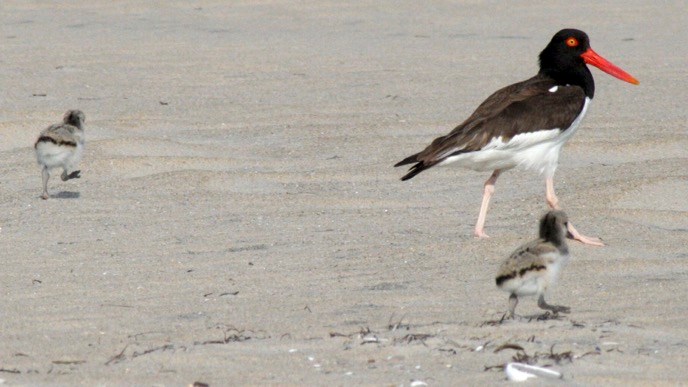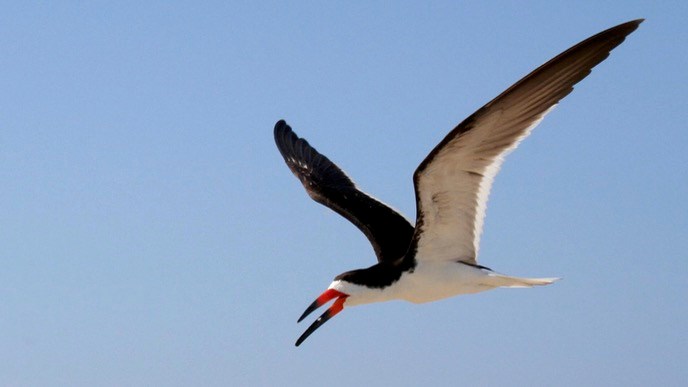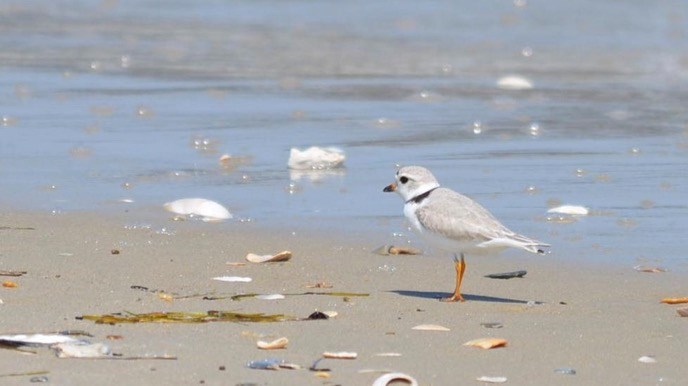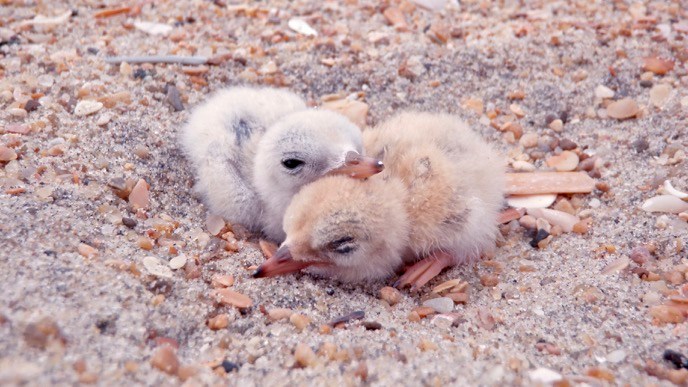
National Park Service Park visitors are not the only summer beach-goers. Each summer, scores of coastal birds find the beaches of Cape Hatteras National Seashore the ideal place to find mates, nest, and raise their young. As you spend your day at the beach, keep an eye and ear open for these beach-nesting birds! 
National Park Service Colonial Nesters Terns and skimmers nest on the upper beach, out of reach of most tidal waters. Their nests are merely scrapes in the sand where two or three pale speckled eggs are laid, blending perfectly with the surroundings. Chicks are born fully feathered and begin walking after two days. Parents bring meals of small fish to their chicks. After three to four weeks the young begin to fly. Terns are extremely agile flyers with keen sight, catching fish near the water's surface. Black Skimmers fly low over the water, day or night, and catch fish by skimming their long narrow lower bill just below the water surface. 
National Park Service Solitary Nesters Both species need large undisturbed beaches to breed successfully. They lay a clutch of well-camouflaged eggs in the sand. The chicks are born fully feathered and can run short distances within hours of hatching. Parents may move the young over long distances for food and protection. Plover chicks feed on insects and small marine invertebrates. They can fly at four to five weeks. Oystercatcher chicks usually begin to fly at five weeks but remain dependent on adults for their shellfish diet during their first two months. 
National Park Service Population Threats Today, these birds are protected by state and federal laws. They face many threats on their nesting, migrating, and wintering grounds such as habitat loss, human disturbance, predation, and storms. At Cape Hatteras National Seashore, beach closures are established to provide undisturbed habitat needed by breeding birds to successfully nest and raise their young. |
Last updated: August 30, 2023
